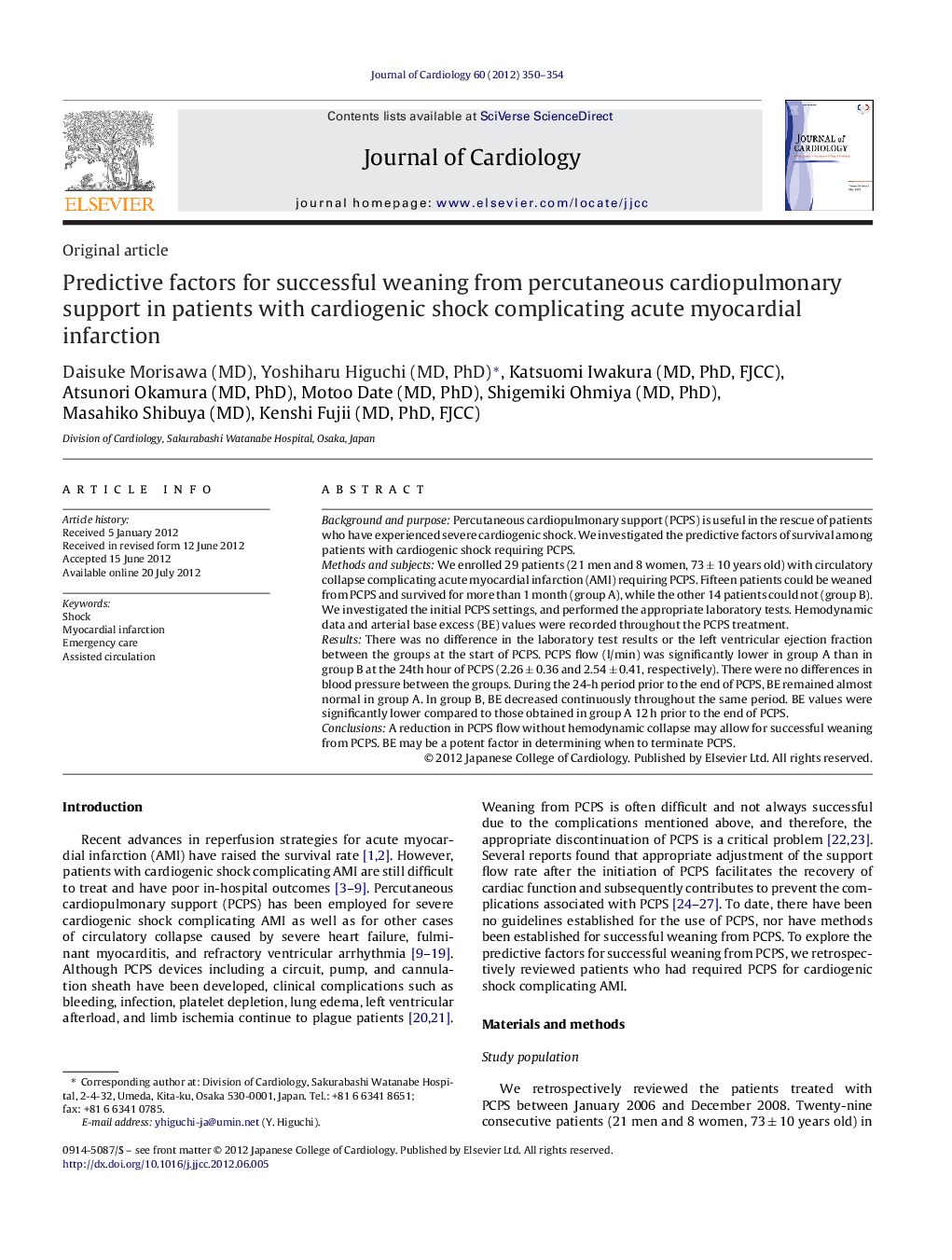| Article ID | Journal | Published Year | Pages | File Type |
|---|---|---|---|---|
| 2963182 | Journal of Cardiology | 2012 | 5 Pages |
Background and purposePercutaneous cardiopulmonary support (PCPS) is useful in the rescue of patients who have experienced severe cardiogenic shock. We investigated the predictive factors of survival among patients with cardiogenic shock requiring PCPS.Methods and subjectsWe enrolled 29 patients (21 men and 8 women, 73 ± 10 years old) with circulatory collapse complicating acute myocardial infarction (AMI) requiring PCPS. Fifteen patients could be weaned from PCPS and survived for more than 1 month (group A), while the other 14 patients could not (group B). We investigated the initial PCPS settings, and performed the appropriate laboratory tests. Hemodynamic data and arterial base excess (BE) values were recorded throughout the PCPS treatment.ResultsThere was no difference in the laboratory test results or the left ventricular ejection fraction between the groups at the start of PCPS. PCPS flow (l/min) was significantly lower in group A than in group B at the 24th hour of PCPS (2.26 ± 0.36 and 2.54 ± 0.41, respectively). There were no differences in blood pressure between the groups. During the 24-h period prior to the end of PCPS, BE remained almost normal in group A. In group B, BE decreased continuously throughout the same period. BE values were significantly lower compared to those obtained in group A 12 h prior to the end of PCPS.ConclusionsA reduction in PCPS flow without hemodynamic collapse may allow for successful weaning from PCPS. BE may be a potent factor in determining when to terminate PCPS.
